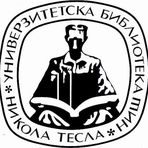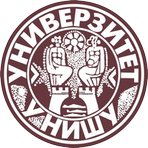Title
Prilog principima projektovanja elemenata donjeg stroja železničke pruge u skladu sa savremenim zahtevima očuvanja životne sredine
Creator
Dimitrijević, Jelena A., 1985-
CONOR:
126799881
Copyright date
2024
Object Links
Select license
Autorstvo-Nekomercijalno-Bez prerade 3.0 Srbija (CC BY-NC-ND 3.0)
License description
Dozvoljavate samo preuzimanje i distribuciju dela, ako/dok se pravilno naznačava ime autora, bez ikakvih promena dela i bez prava komercijalnog korišćenja dela. Ova licenca je najstroža CC licenca. Osnovni opis Licence: http://creativecommons.org/licenses/by-nc-nd/3.0/rs/deed.sr_LATN. Sadržaj ugovora u celini: http://creativecommons.org/licenses/by-nc-nd/3.0/rs/legalcode.sr-Latn
Language
Serbian
Cobiss-ID
Theses Type
Doktorska disertacija
description
Datum odbrane: 20.05.2025.
Other responsibilities
Academic Expertise
Tehničko-tehnološke nauke
University
Univerzitet u Nišu
Faculty
Građevinsko-arhitektonski fakultet
Group
Katedra za saobraćajnice
Alternative title
Contribution to the principles of the railway substructure elements design in accordance with the contemporarz requirements of enviromental protection
Publisher
[J. A. Dimitrijević]
Format
XIV, 179 listova
description
Biografija: list. 179.
Bibliografija: listovi 166-178.
description
Civil Еngineering, Railways
Abstract (en)
The subject of the doctoral dissertation is the impact of railway traffic on
the environment, with the aim of preventing/mitigating water and soil
pollution in the area of railway tracks. Through a detailed analysis of the
prescribed technical conditions for the design of railway substructure
elements, the basic requirements were determined, which conditioned the
proposal of new solutions related to the substructure. An independent
investigation of the material in the railway body was carried out regarding
the presence of heavy metals. For research purposes, two methods were
used, optical emission spectrometry with induced coupled plasma (ICPOES)
and X-ray fluorescence spectrometry (XRF). Since it was confirmed
that there is a significant amount of heavy metal particles in the railway
body, the proposal of contemporary solutions for drainage channels and
elements in the railway body itself was approached in order to prevent the
release of heavy metals into the surrounding soil and environment. The
proposed solution included the replacement of conventional drainage
ditches with infiltration channels. In this regard, experimental testing of the
filter properties of four types of filters was carried out. The efficiency of
the proposed filters was verified using the ICP-OES technique, and the
filter with river aggregate of fraction 4 – 8 mm was identified as the most
efficient. The hydraulic parameters of the route case with typical (drainage)
ditches and the route case with the proposed infiltration channels were
evaluated by SWMM software. The modeling results revealed that using
infiltration channels does not result in the total utilization of the drainage
components' capacity, which improves railway safety in terms of floods.
Authors Key words
železničke pruge, donji stroj pruga, zagađenje teškim metalima,
odvodnjavanje pruge, održivi sistem odvodnjavanja
Authors Key words
railway track, railway substructure, heavy metals pollution, railway
drainage, sustainable drainage system
Classification
625.12/.123(043.3)
Subject
Т 220
Type
Tekst
Abstract (en)
The subject of the doctoral dissertation is the impact of railway traffic on
the environment, with the aim of preventing/mitigating water and soil
pollution in the area of railway tracks. Through a detailed analysis of the
prescribed technical conditions for the design of railway substructure
elements, the basic requirements were determined, which conditioned the
proposal of new solutions related to the substructure. An independent
investigation of the material in the railway body was carried out regarding
the presence of heavy metals. For research purposes, two methods were
used, optical emission spectrometry with induced coupled plasma (ICPOES)
and X-ray fluorescence spectrometry (XRF). Since it was confirmed
that there is a significant amount of heavy metal particles in the railway
body, the proposal of contemporary solutions for drainage channels and
elements in the railway body itself was approached in order to prevent the
release of heavy metals into the surrounding soil and environment. The
proposed solution included the replacement of conventional drainage
ditches with infiltration channels. In this regard, experimental testing of the
filter properties of four types of filters was carried out. The efficiency of
the proposed filters was verified using the ICP-OES technique, and the
filter with river aggregate of fraction 4 – 8 mm was identified as the most
efficient. The hydraulic parameters of the route case with typical (drainage)
ditches and the route case with the proposed infiltration channels were
evaluated by SWMM software. The modeling results revealed that using
infiltration channels does not result in the total utilization of the drainage
components' capacity, which improves railway safety in terms of floods.
“Data exchange” service offers individual users metadata transfer in several different formats. Citation formats are offered for transfers in texts as for the transfer into internet pages. Citation formats include permanent links that guarantee access to cited sources. For use are commonly structured metadata schemes : Dublin Core xml and ETUB-MS xml, local adaptation of international ETD-MS scheme intended for use in academic documents.


